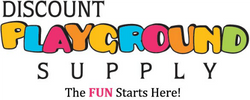
Trying to improve upon and alter your community to be a healthier, inclusive, and more functional space can seem like an impossible task with how much time and effort is needed. The best way to go about this, however, is to focus on the public spaces within your community. Here’s how to transform communities through parks and placemaking.
Makes Streets Into Places
One of the best tips when it comes to improving the “community” aspect of your community is to change the way you think about its streets. If you only consider them as a way to a direct traffic, then that’s exactly how they’ll be designed. Instead, consider them a place that can be safe and comfortable for the community to gather in. While this may not accommodate private vehicles as well, it’ll be perfect for the community to get together to celebrate events and promotes walking – whether that be to get to public transportation or in general. This will create a physically healthier community and reduce the amount of pollution in the area as fewer cars must be used to get around.
A good example of this idea is the city of Medellin in Colombia. To solve the issue of multiple neighborhoods being plagued with gangs and crime, the Metrocable was created to provide easy public transport for marginalized communities to reach the inner city. The streets below were then converted into plazas and other public spaces that provided a safe area for residents to gather and spend time. Furthermore, these plazas would attract the construction of public amenities and utilities to further encourage public participation.
Create Multi-Purpose Parks
Public parks are always a fantastic addition to any community. Not only do they provide a place within the neighborhood for residents to meet and socialize, but they also raise the property value of the area around it. The key to making a truly effective park, however, is by designing it to be multi-purposed and suitable for different ages and demographics. In fact, a good community outreach opportunity is to involve your residents in the planning process of the park so that it not only appeals to them as much as possible but helps you establish a stronger relationship with your community.
If your community features a lot of younger families with kids, then a public playground is a must. A playground provides children with opportunities of exercise and socialization to help them develop basic skills necessary for growing up healthy. If you do build a playground, make sure you have the proper surfacing and playground barriers to minimize injuries from falls, as they are always the most common source of injury on the playground.
For adults, providing a space for parents to supervise their kids while also interacting with other parents will give them a relaxing area to balance their parenting responsibilities with their desire to socialize. These kinds of public parks are crucial for creating a more tight-knit community.
As these parks are created and attract families, the appropriate businesses and amenities will spring up around the area. Ice cream stores, restaurants, and other fun places will only continue to attract the attention of families and create a thriving square both socially and economically.
Encourage Local Markets
This goes well with the idea of making streets into places for more than just cars. Local markets, like a farmers’ market, are a wonderful way to boost the local economy. These markets have the potential to descend into chaos, however, as they clog streets and make it difficult for brick-and-mortar businesses to operate during this time. To prevent this, regulating and overseeing local markets will help provide a necessary framework and structure to make these markets much easier to navigate and conduct business to the benefit of everyone participating. With this structure and organization, local markets can help other smaller businesses thrive with the influx of customers attracted to the area by the buzzing activity of a market.
Buildings That Support Community
In communities that are rapidly developing, it’s easy for the community to feel more separated or isolated as neighborhoods are replaced with towering structures, and schools or public libraries end up looking like concrete fortresses to accommodate the area. Think of standing in the middle of the city; you’re not really supposed to loiter, you’re just kind of supposed to move with the flow of traffic until you reach a destination.
To combat this, design buildings that support public areas; places where residents can stop and enjoy during their day to foster street life and create a sense of place. These areas might be plazas, parks, or anything else designed to cater to the general public and break up the monotony of concrete and generic buildings.
Create a Healthy Infrastructure
Maybe you don’t need to build something new, but instead, turn your efforts inward to focus on improving what already exists. Infrastructure, the backbone of your community, is where you’ll be able to ensure residents are receiving anything they need to be happy and healthy. This contains basics like clean water, sanitation, sewage treatment, and public safety. After the necessities are met, you can focus on providing healthy food options and restaurants in the area rather than fast food to encourage healthier eating and a healthier community.
Restructure Local Government
Similarly, while the local government has the power to make changes and improve the community for the better, the local government is often the biggest obstacle in the way of those changes. Before you can figure out how to transform communities through parks and placemaking, you need to make sure the rest of the local government is of the same mind. Transportation departments, for example, may simply view their mission as managing traffic and everything else comes second. Building the right administration that shares similar goals will always be necessary for change to take place.
Start Small and Experiment
Lastly, improving the entire community may seem daunting to undertake, but keep in mind that you don’t have to change and improve everything at once. Start small and test out new ideas. You’ll be able to see how the public reacts and how new amenities or utilities affect the rest of the area before you fully commit to a widescale change.


